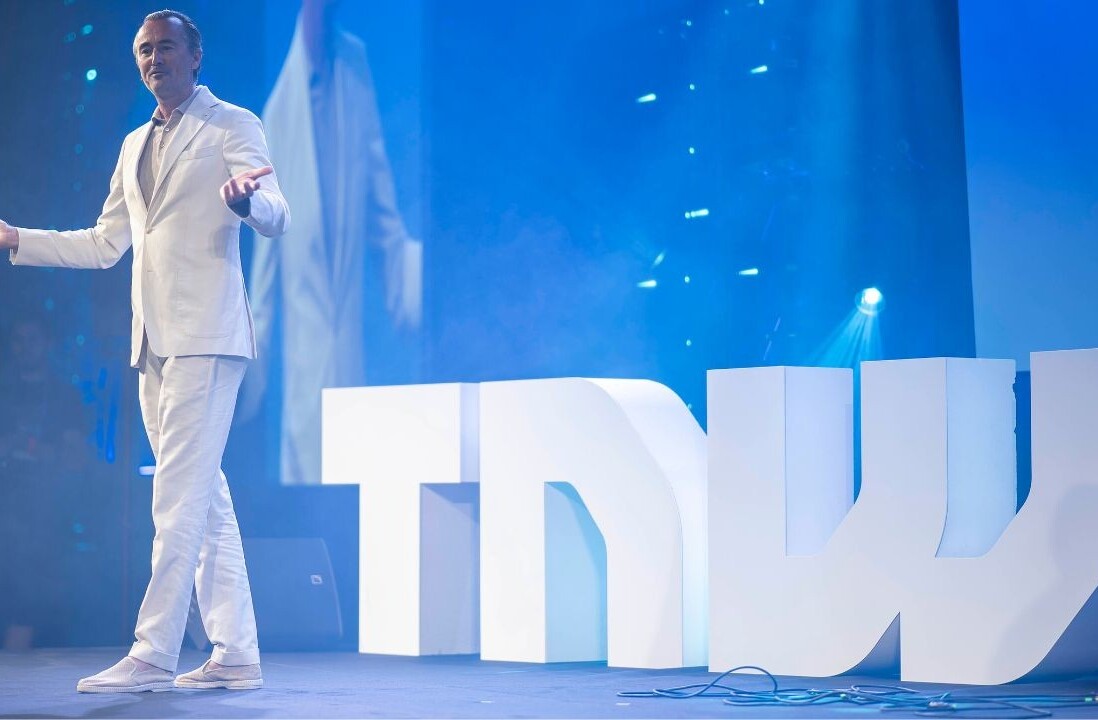
 Every week we publish an interview with a start-up. We ask five questions, hoping the answers will give you inspiration and new views. Well, actually six questions, since we also ask the start-up to who he or she is passing the mic to.
Every week we publish an interview with a start-up. We ask five questions, hoping the answers will give you inspiration and new views. Well, actually six questions, since we also ask the start-up to who he or she is passing the mic to.
As I’ve promised you last week, I will interview the start-ups who participated in the start-up rally of PLUGG 2008/ This time we’re interviewing Alberto Naranjo Galet from Tagmore. This is a company that focuses on connection online content with off line content by using a mobile device. As our WebTipr from Japan reported, this is normal in Japan and other Asian countries. Yet in the US and Europe there’s a whole lot to do before it gets common. Tagmore is one of the pioneers that are ahead of a new trend. If you want to know more about the technology, I suggest you read this thorough post by Mike Butcher.
How did you come up with the idea of Tagmore?
 “I think it was a thinking process that lasted 10 years. I have always dreamed with the idea of linking the physical world with the “virtual one”, under the influence of William Gibson’s novels and the virtual/expanded reality concepts. Thanks to the Tagmore architecture a physical object is the object itself, plus dynamic rich data, plus communities and networks of real people around the physical object. So we basically hyperlink this physical object in a secure way, and offer services around it. We can issue secure mobile tickets and coupons, enable smart shopping or launch mobile marketing campaigns with 2D barcodes and RFID based technology. That’s bringing the future to present in a way that’s usable for businesses, don’t you think so?”
“I think it was a thinking process that lasted 10 years. I have always dreamed with the idea of linking the physical world with the “virtual one”, under the influence of William Gibson’s novels and the virtual/expanded reality concepts. Thanks to the Tagmore architecture a physical object is the object itself, plus dynamic rich data, plus communities and networks of real people around the physical object. So we basically hyperlink this physical object in a secure way, and offer services around it. We can issue secure mobile tickets and coupons, enable smart shopping or launch mobile marketing campaigns with 2D barcodes and RFID based technology. That’s bringing the future to present in a way that’s usable for businesses, don’t you think so?”
What was your biggest challenge during the development process?
 “I think the biggest challenge for us was to get funding by presenting the potential of the vision, without dying in the process of explaining the full details of the underlying concepts to the VCs and business partners, apart from the business plan in a spreadsheet. We were used to hear things like: “Yea, I have heard that before” or “this is the mobile codes and stuff”. It’s hard to get people on board with the idea, the differentiation factor and all the business potential that is out there. Additional problems we found were the usual conflicts from few guys working very hard and close together with ambitious objectives.”
“I think the biggest challenge for us was to get funding by presenting the potential of the vision, without dying in the process of explaining the full details of the underlying concepts to the VCs and business partners, apart from the business plan in a spreadsheet. We were used to hear things like: “Yea, I have heard that before” or “this is the mobile codes and stuff”. It’s hard to get people on board with the idea, the differentiation factor and all the business potential that is out there. Additional problems we found were the usual conflicts from few guys working very hard and close together with ambitious objectives.”
“My advice to other guys trying to get funding for their start-up is to focus on the main idea, and design a very concise and clear monetization plan to show to investors. They will have time later in the process to develop secondary ideas from the core one.”
Can you describe the Spanish start-up culture compared to Silicon Valley?
 “We, the tech entrepreneurs, tend to think about Silicon Valley like a heaven on earth, full of high potential workers and partners, VCs with full pockets looking where to put their money. Perhaps this is in part true, the Valley is really an awesome place. You can see Google offices and workers lifestyle as an example of good envy. But I think here in Europe we have enough potential, and a growing community of places with the right things to become a real competitor to Silicon Valley on innovation and tech business over the next few years. One of these places is Malaga, in the southern coast of Spain, a great place to work and do business (you have the beach also!) where I used to work.”
“We, the tech entrepreneurs, tend to think about Silicon Valley like a heaven on earth, full of high potential workers and partners, VCs with full pockets looking where to put their money. Perhaps this is in part true, the Valley is really an awesome place. You can see Google offices and workers lifestyle as an example of good envy. But I think here in Europe we have enough potential, and a growing community of places with the right things to become a real competitor to Silicon Valley on innovation and tech business over the next few years. One of these places is Malaga, in the southern coast of Spain, a great place to work and do business (you have the beach also!) where I used to work.”
“At first sight the business culture in Spain seems to be very conservative in contrast with the USA. But in general, more and more people in Spain are getting close to the idea on how much profitable and interesting the Internet and technology-based businesses are.”
What will be the influence of your start-up on the next web?
 “I think part of the next web is not about typing and scrolling in front of a computer in your home or office. It is more about people and their network, looking to get something done, for pleasure or work, but in a ubiquitous way. Tagmore provides the tools and services to integrate Internet advantages and features in a connected lifestyle, wherever you are. I think it will be a rupture point not only with the way we communicate with our close environment as users, but as consumers we will be able to buy things we want, anytime and anywhere, for the bad or the good. And we already carry connected multimedia microcomputers inside our pockets and bags, everywhere we go. Except Nokia, they call them mobile phones I think.”
“I think part of the next web is not about typing and scrolling in front of a computer in your home or office. It is more about people and their network, looking to get something done, for pleasure or work, but in a ubiquitous way. Tagmore provides the tools and services to integrate Internet advantages and features in a connected lifestyle, wherever you are. I think it will be a rupture point not only with the way we communicate with our close environment as users, but as consumers we will be able to buy things we want, anytime and anywhere, for the bad or the good. And we already carry connected multimedia microcomputers inside our pockets and bags, everywhere we go. Except Nokia, they call them mobile phones I think.”
You can make up this question yourself!
 What is the hot stuff you are working on right now?
What is the hot stuff you are working on right now?
“We are working hard in our mobile marketing platform, integrating new stuff and improving the usability of the interface. I think it’s a unique product, marketing and media agencies will love it, because they will be able to deploy effective and cheap mobile marketing campaigns based on the latest 2D barcodes model for the masses. Getting feedback and analysing in real time the effect and segmentation from every campaign, content and channel. Even geographically inside a city. We are very proud about it because it’s almost magic.”
Who’s next?
“Well, I think you should speak with Anil de Mello from Mobuzz TV. They are an Internet TV Spanish start-up. They produce short programs in English, French and Spanish. I am sure you will love the format.”
Get the TNW newsletter
Get the most important tech news in your inbox each week.





